The Vatican Museums serve two purposes: As the Papal Palaces they have been home to centuries of popes, who built and decorated apartments to suit their sensibilities. Just as importantly though, they house some of the world’s most beautiful and important art.
Covering a staggering 9 miles, the Vatican Museums’ art collection includes Greek and Roman sculptures; masterworks by Raphael, Giotto, Perugino and Caravaggio to name just a few Renaissance geniuses; medieval maps and tapestries; and world-famous rooms like the Sistine Chapel.
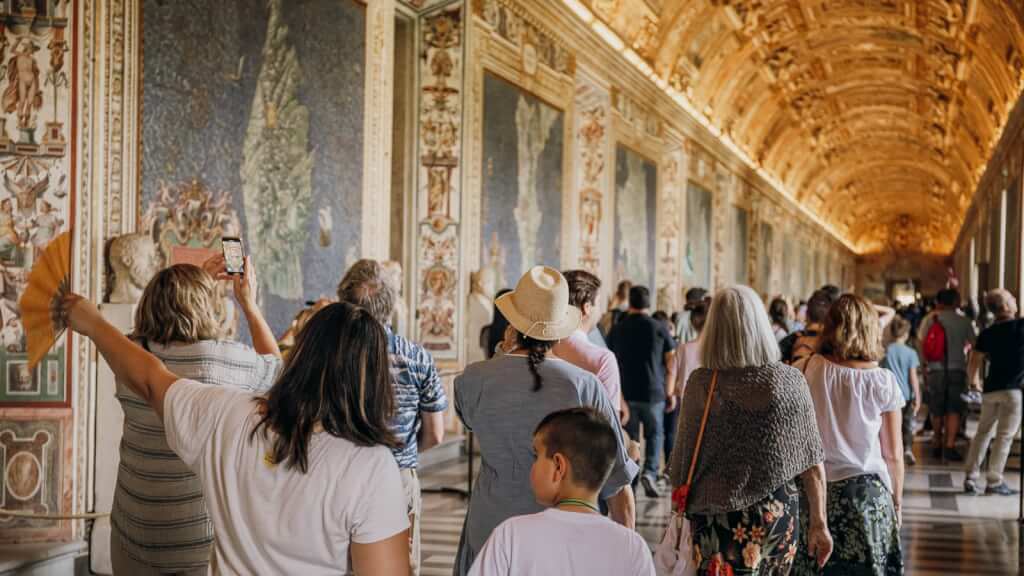
Although Pope Francis has opted for a more humble abode in the Vatican Hotel, his forebears shaped the Vatican Museums into a unique mix of architectural masterwork and history-spanning art collection. The result is a huge and impressive complex that wonderfully blurs the line between private residence and public gallery.
Check out our extensive Vatican Museums tours with an expert guide to see the best of the collection. Admire the Sistine Chapel, learn the stories behind the art, and explore courtyards filled with the most important classical sculptures.
Visiting the Vatican Museums: What to See
The Sistine Chapel
The Vatican’s Sistine Chapel is probably the most well-known single room in the world, mostly because of the awe-inspiring frescoes by that titan of the Renaissance, Michelangelo Buonarroti.
Michelangelo’s work is actually comprised of two different frescoes: The ceiling, featuring scenes from the Old Testament, and the altar wall, which holds his dark and thrilling Last Judgement. He painted both in the 1500s but with a break of 23 years between the ceiling and The Last Supper.
Despite considering himself more of a sculptor than a painter (in fact, he declined the pope’s first request to paint the chapel), he created some of the most enduring and reproduced images in the history of art; such as The Creation of Adam.
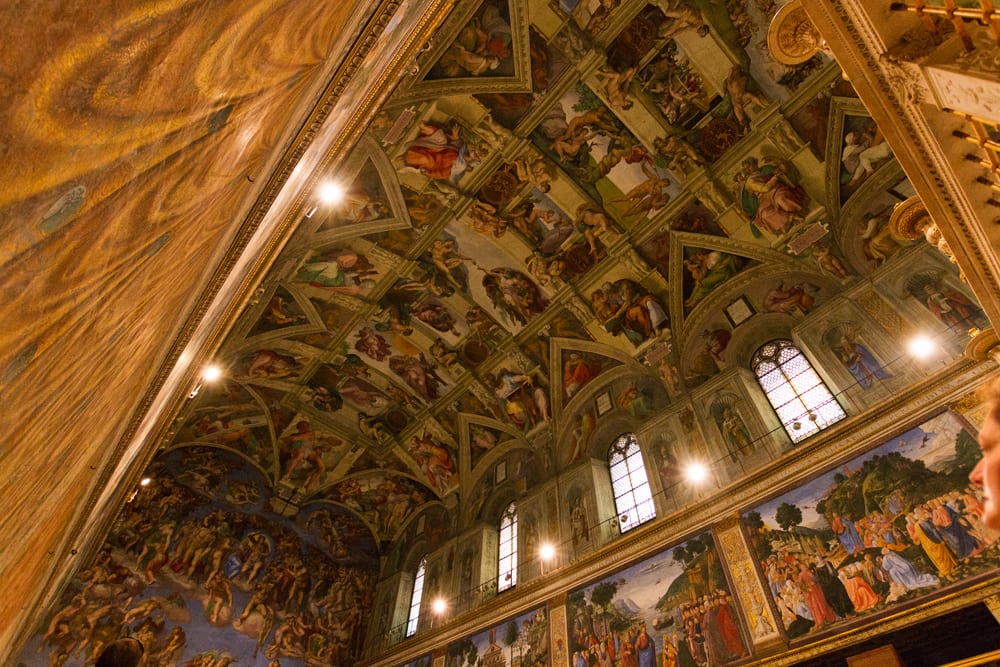
Often mistakenly called the “Sixteenth Chapel”, the room itself was built in 1481, under the commission of Pope Sixtus IV, for whom it was named. Although it attracts a large number of visitors every day, the Sistine Chapel is still used for masses and, more famously, papal conclaves.
The latter take place when the College of Cardinals convenes to elect a new pope upon the death or resignation of the current one. Among all the beautiful rooms in Italy, the Sistine Chapel reigns supreme for the unique experience it affords visitors of earth-shattering grandeur and startling intimacy.
The Raphael Rooms
In 1508 Pope Julius II decided to brighten his papal apartments with a lick of paint. He called on a young painter from Urbino by the name of Raphael and the rest is history.
The frescoes painted by the soon-to-be master (along with Michelangelo’s Sistine Chapel frescoes) kicked off the period of incomparable artistic exuberance now known as the High Renaissance. The papal apartment project outlived Pope Julius II and even Raphael, so all of the frescoes in the largest room, the Sala di Constantino, were actually painted by Raphael’s assistants.

To see the master’s finest work, visitors crowd into the Stanza della Segnatura, Pope Julius’ study, to gape at the Scuola di Ateni or School of Athens, an incredible fresco that places all of the greatest minds of antiquity into a single, perfectly balanced scene. You won’t find a better representation of the perfection of Renaissance form and ideals anywhere in the world.
The beauty of the four Raphael Rooms has made them one of the most beloved stops in the Vatican Museums, second only to the Sistine Chapel. When you visit, keep an eye out for likenesses in the paintings. Raphael painted many of his contemporaries into the School of Athens, paying particular homage to his sometime hero, sometime rival – Michelangelo.
Gallery of the Maps
One of the most striking of the Vatican’s many long galleries, the Gallery of the Maps is lined with frescoes that are all based on the work of one man; the 16th century priest and polymath Ignazio Danti.
On top of being a respected scientist, mathematician, and astronomer, Danti was a dab hand at painting maps. When Pope Gregory XIII summoned him to Rome in 1580 to supervise the fresco painting in a new gallery, Danti embarked on a cartographic masterwork larger than anything ever attempted in Europe.
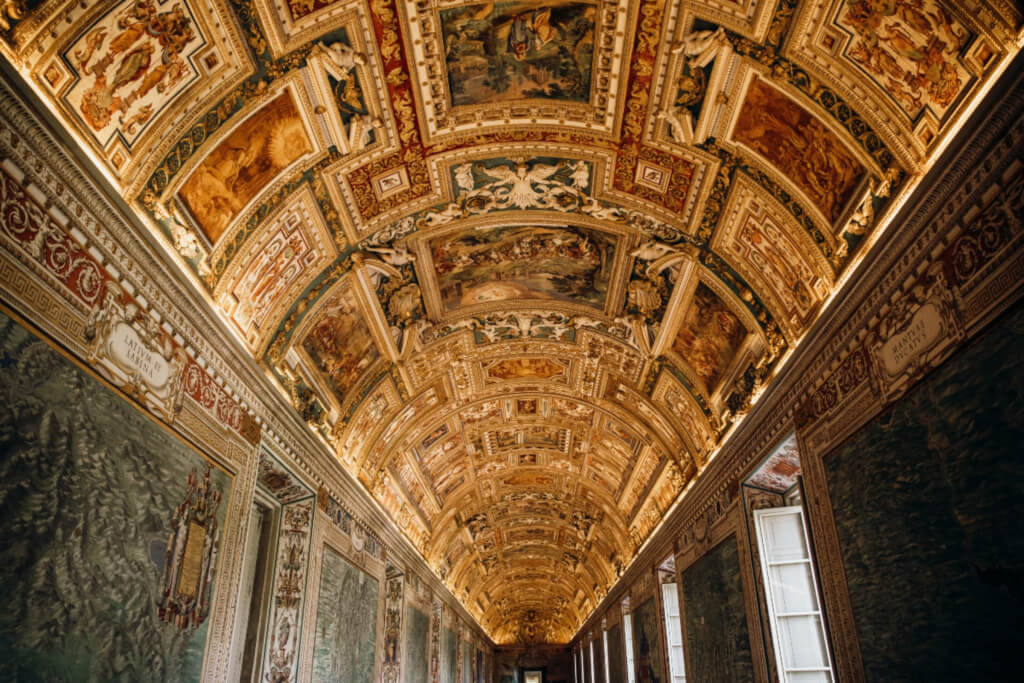
Working from existing maps, he and a team of artists created 40 frescoes showing every part of Italy from a bird’s eye view. The frescoes sit somewhere between maps and landscape paintings, beautiful in their execution and nearly unbelievable in their scope.
Visiting the Vatican Museums today, you’ll be surprised by the similarities and differences in 16th-century maps and those of the 21st century. Like, for example, how Pompeii is missing entirely in Danti’s paintings! And don’t forget to look up: The ceiling holds the gorgeous work of a group of mannerist painters that seems to imbue the plaster itself with a radiant glow.
Laocoön and His Sons
This often-mispronounced Hellenistic statue (for the record, it’s Lay-o-ku-won) is one of the most beautiful and controversial antiquities from Italy. Who sculpted it, where, and when are still matters of hot debate but this statue of a Trojan priest being killed by serpents sat in the Palace of Emperor Titus before being lost and buried in a vineyard for years.
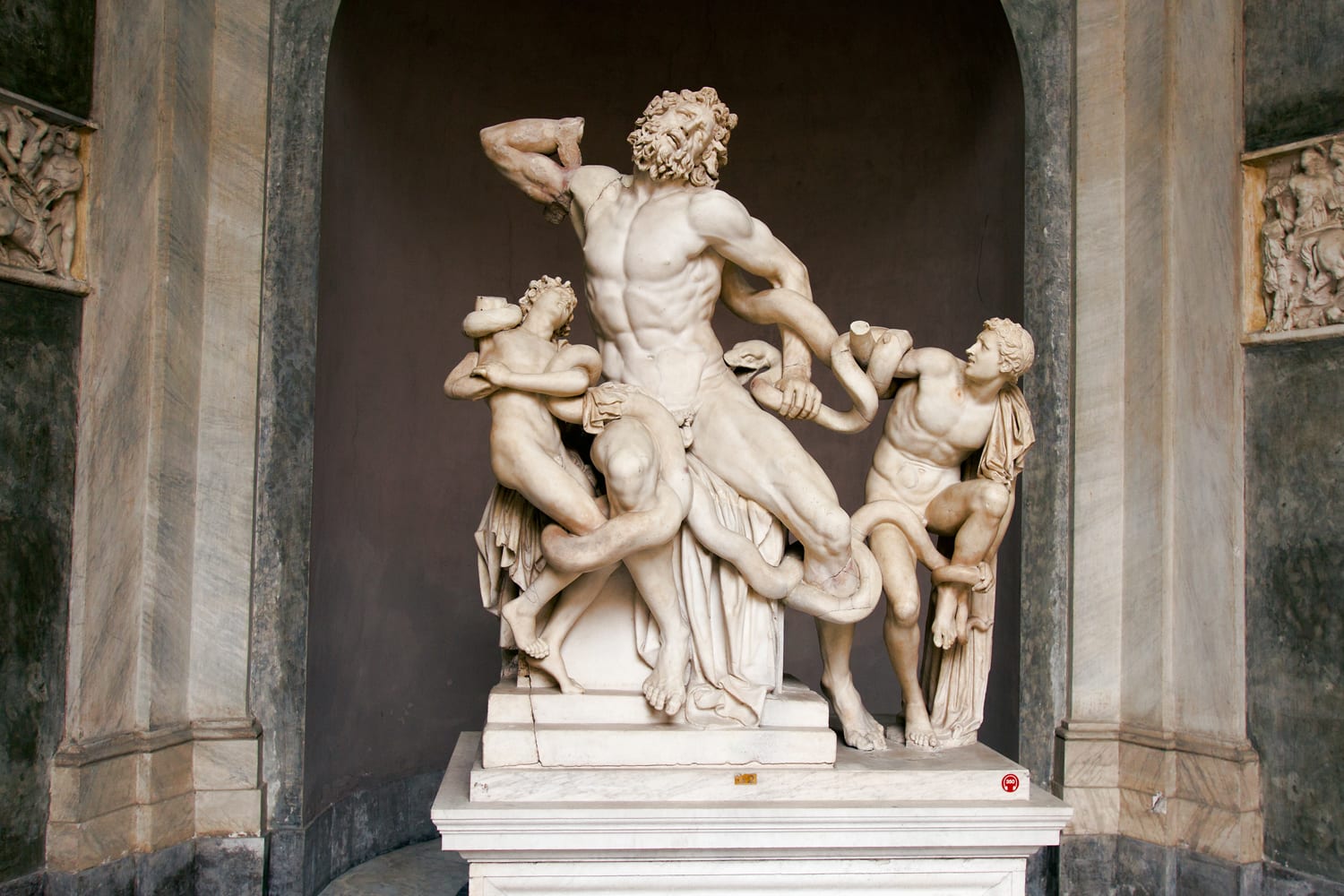
When Laocoön was unearthed, it was immediately recognized as a masterpiece, both in its depiction of the of the body and unbridled agony. Like many stone statues of the period, it’s most likely a copy of a bronze statue that has been lost, though that is also a matter of debate. What is certain is that it’s impossible to look upon the statue without feeling the thrill of knowing that something so lifelike was created by human hands over 2,000 years ago.
The Apollo Belvedere and Belvedere Torso
You’d be hard pressed to find two statues that have had more of an influence on Western art than the Apollo Belvedere and the Belvedere Torso; both housed in the Vatican Museums.
The Apollo Belvedere is the most important statue you’ve never heard of. This 4th century BC marble statue of the Greek god Apollo was adored to the point of fetish by the men who developed the discipline of Art History in the 18th century.
For those who prefer something a little more robust, the Belvedere Torso has had a similarly outsized influence on artists; but while the Apollo is boyish and gentle, the torso is rugged and muscular.
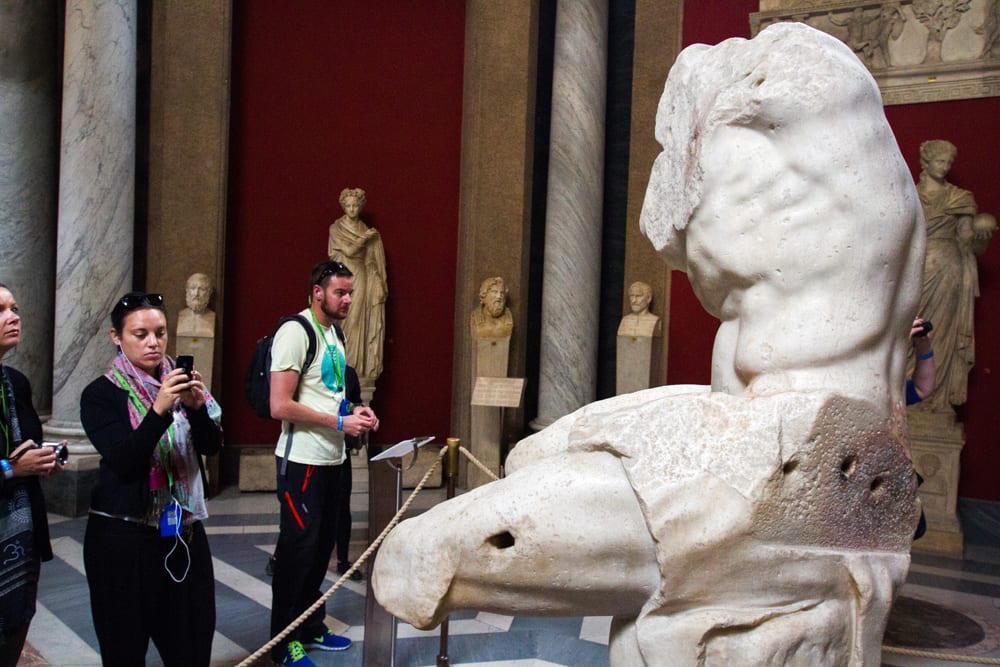
It is a first century sculpture, perhaps of Hercules, that was vaunted upon its rediscovery for its incredibly rendered musculature (think Arnold Schwarzenegger in his prime), but cut from marble. Michelangelo is said to have been so impressed with the torso that he based some of the characters in the Sistine Chapel on it.
When you see the Belvedere Torso, pay attention to the way it is posed. That same pose appears again and again in Renaissance art. In one of those strange twists of randomness that seem to happen fairly regularly with antiquities, the only reason both statues include “Belvedere” in their names is because they were originally on display in the Belvedere Courtyard. Apollo still stands there today, while the Torso has been moved inside.
The Borgia Apartments
Like his successor Julius II, Pope Alexander VI (AKA: Rodrigo de Borgia) commissioned a Renaissance master, Pinturicchio, to spruce up his apartment in the Vatican.
In two short years Pinturicchio painted and frescoed a complex set of works, celebrating the origins of the Borgia family with intense iconography and lush detail. One painting, The Resurrection, even features what is thought to be the earliest known European depiction of Native Americans, which he painted in 1494, just two years after Christopher Columbus’ fateful voyage.
Because they sit alongside the Raphael Rooms and Sistine Chapel, Pinturicchio’s masterpieces are often skipped over or ignored by visitors but those in the know take advantage to enjoy some of the Renaissance’s finest frescoes in relative peace.
The Niccoline Chapel
This is the Vatican’s hidden gem, literally. It’s stashed away behind lock and key in the oldest section of the Apostolic Palace. Originally built as a private chapel for Pope Nicholas V, it is adorned with frescoes by a lesser known, but absurdly talented painter who is remembered by the the nickname Fra Angelico.
Born Guido di Pietro, he was a Dominican friar and illuminator (basically an illustrator of bibles, when illustrating involved wildly intricate borders and lots of gold leaf) under the name Fra Giovanni before his career as a painter took off.
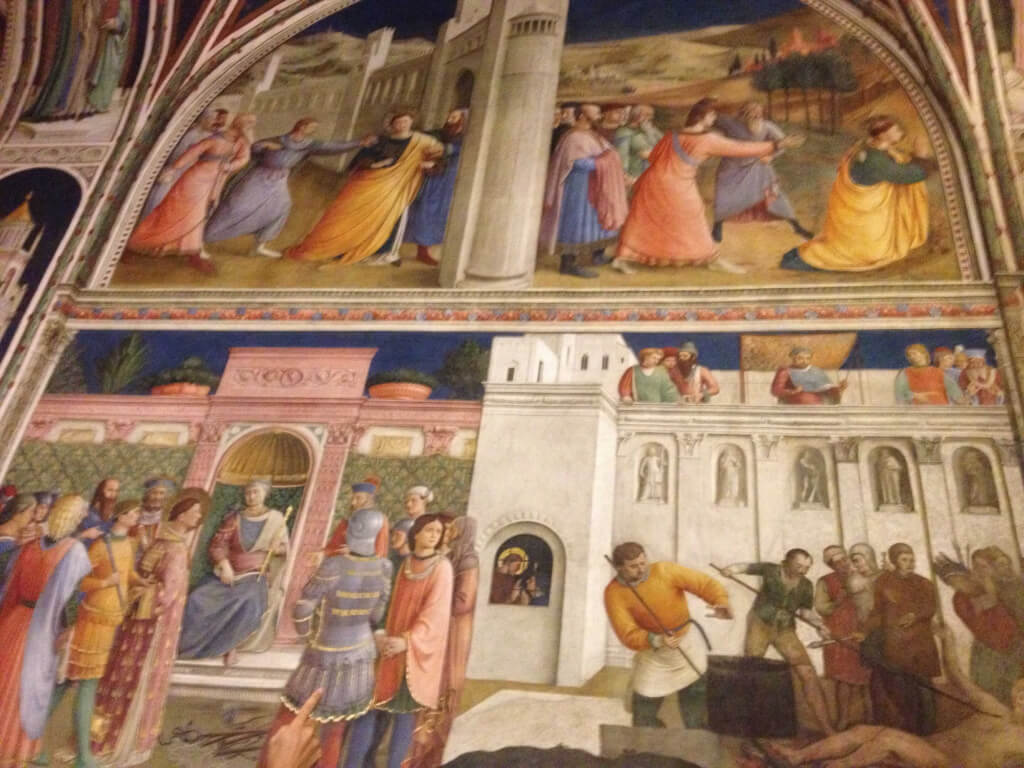
In 1445 he was called to Rome to paint scenes in the Vatican based on his reputation for having a peerless grasp of perspective painting. The Capella Niccolina features scenes from the lives of St. Stephen and St. Lawrence and the tiny size of the chapel, along with its beautiful art make it one of the most affecting spaces in the entire Vatican.
The Niccoline Chapel is only visitable on special access tours and is not open to the public.
The Pinacoteca Art Gallery
A gallery within a gallery, the Pinacoteca Art Gallery is a more modern wing of the Vatican Museums and home to an impressive collection of paintings and works, stretching from the early Renaissance all the way to modern day. Compact in size, it makes for a very manageable visit although it’s covered on very few tours.
Keep an eye out for the only work by Leonardo da Vinci in the Vatican Museums, a rough sketch called St. Jerome in the Wilderness; numerous works by Raphael including the stunning Transfiguration; Caravaggio’s Entombment; and paintings by Veronese, Bellini, Titian, Correggio and Perugino.
Nero’s Bathtub
Valued by some as high as €2 billion, Nero’s bathtub is one of the most precious works in the Vatican Museums. Stretching a whopping 25ft in diameter, it’s made of a deep red/purple porphyry marble. This stone was quarried from a single source in Egypt and no other deposits of it have ever been found.
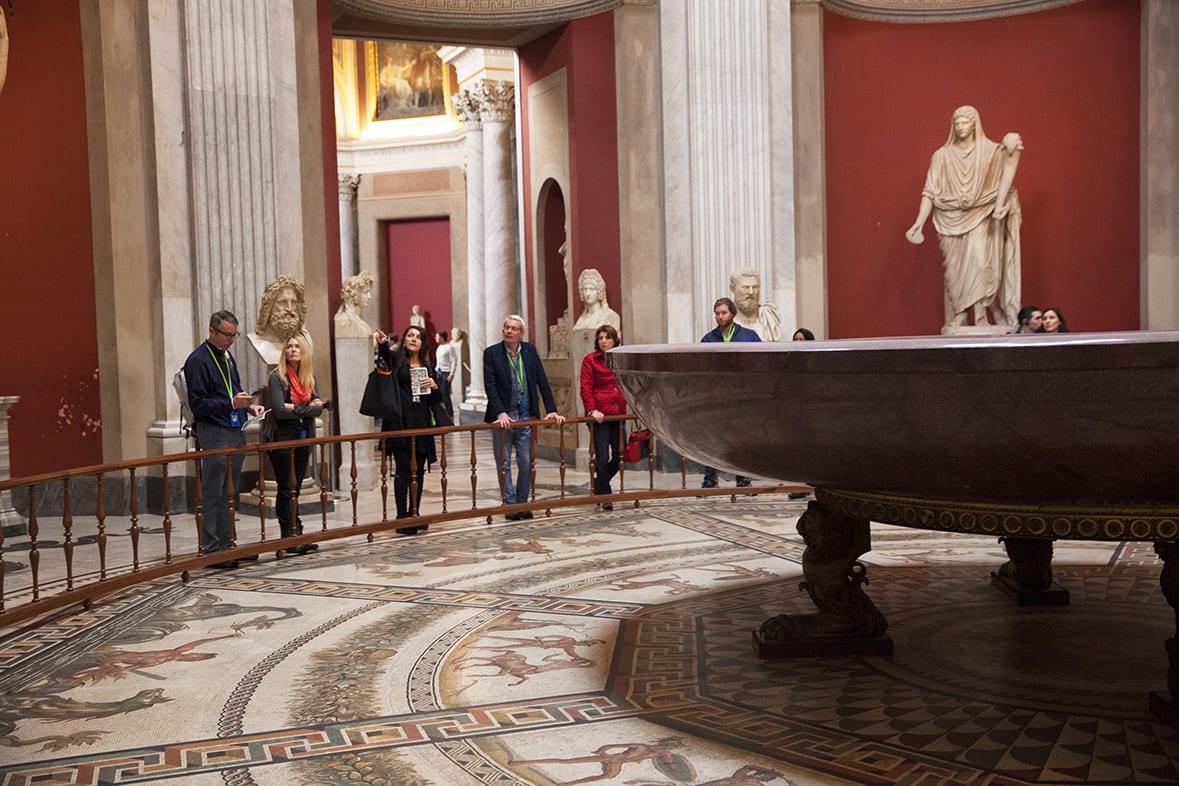
In the age of Nero, porphyry was one of the most desirable decorative materials available. Weighing a ton, it was a nightmare to move an inch, let alone transport by boat from Egypt to Rome — making its ownership the ultimate show of wealth.
As time went by, the steel and stone used by the Ancient Romans disintegrated, but porphyry marble was hard enough to withstand the passage of time and elements. It outlasted other artifcats to become the ultimate symbol of Ancient Roman power, wealth and skill.
Today the Vatican is home to 80% of the world’s store of porphyry and Nero’s Bathtub is its most impressive piece.
The Egyptian Museum
The Egyptian Museum is a wing of the Vatican Museums that few visitors ever see, and one that’s well worth a visit in its own right. Decorated in an Egyptian style, these rooms house a collection of mummy cases and sarcophagi, Ancient Egyptian jewelry, Egyptian-style statues taken from Hadrian’s Villa in Tivoli and a number of authentic Ancient Egyptian statues dating all the way back to the 21st century BC.
Because they are so different to the rest of the collection, the Egyptian antiquities are rarely included on group tours. But they are a fantastic reflection of the diversity contained within the Vatican Museum’s art collection.
The Room of the Animals
Great for kids and animal-lovers, the Hall of the Animals was created under Pope Pius VI as a “stone zoo” and follows through on its promise with a number of fantastic stone sculptures, most of which were created in the 1700s.
Read more: A Guide to Visiting the Vatican Museums
Tips For Visiting the Vatican Museums
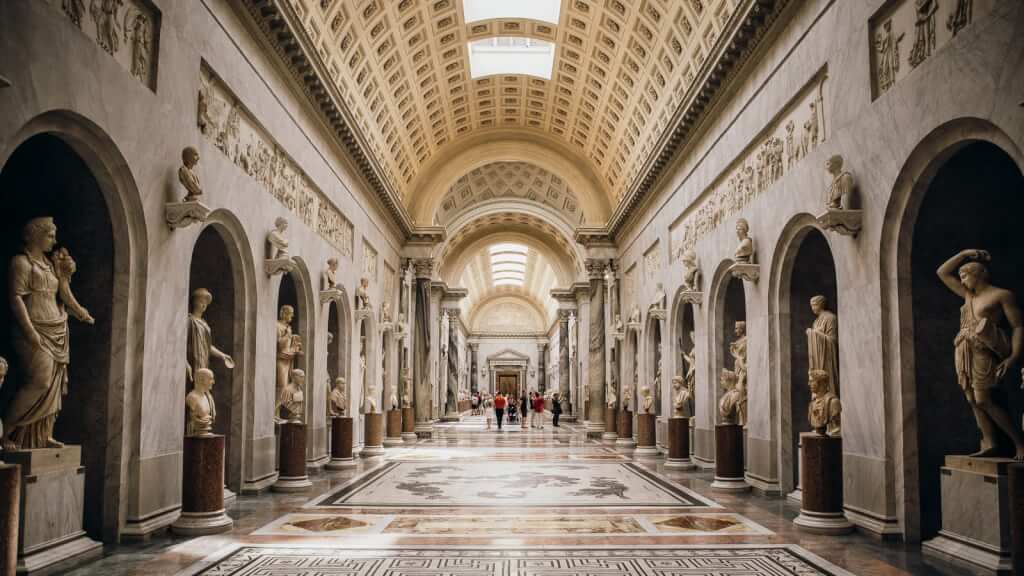
Açılış Saatleri
Measures are presently in place to ensure visits can take place in the best and safest conditions, and prevail over the ordinary conditions. Entry to the Vatican Museums is by obligatory online booking.
Until June 30, 2021
Monday to Thursday: 8.30am to 6.30pm with last entry at 4.30pm
Friday and Saturday: 8.30am to 8.00pm with last entry at 6.00pm
From July 1, 2021
Monday to Thursday: 8.30am to 6.30pm with last entry at 4.30pm
Friday and Saturday: 8.30am to 10.30pm with last entry 8.30pm
Visitors are required to leave the halls 30 minutes before museum closing time.
Closures
The extraordinary openings on the last Sunday of the month are suspended.
Closed: Sundays, 25th and 26th of December (Christmas and St. Stephen’s Day) ; January 1, 6; February 11, 22; March 19, 28; June 29 (the Feasts of St. Peter and Paul); August 15; November 1; December 8.
Check the Vatican website here for more information on holiday closings and special openings.
Rules for visiting the Vatican Museums
The rules of the Vatican are strict and pretty uncompromising – please familiarise yourself with them before attempting to visit.
- Food and drink are not allowed into the Vatican Museums. You can, however, leave them in the cloakroom and collect them at the end of your visit. Any food or drink that goes uncollected will be disposed of at the end of each day.
- You cannot bring any bag, backpack suitcase or container larger that cm 40 x 35 x15 into the Vatican Museums. Similarly, you can’t enter with medium to large umbrellas, any umbrellas with spiked tips, camera tripods, signage (apart from signs used by certified guides) or walking sticks – except those required by disabled visitors. All of these items can be left in the cloakroom.
- Firearms are strictly prohibited for visitors within the Vatican Museums and cannot be checked in the cloakroom. Knives, scissors and other cutting tools are permitted but must be deposited in the cloakroom as as a precaution against harming the artwork inside.
- The Vatican Museums are under constant video surveillance and any touching or tampering with artwork is strictly prohibited. Also, no laser pointers.
- All tour groups are required to wear headsets for groups of 11 or more people. The use of microphones or any type of voice amplifiers is prohibited.
- The Vatican has a strict dress code. Both men and women should be sure to wear clothes that cover their shoulders and knees. Occasionally visitors get away with wearing a bit less but it’s best not to risk it. Hats are also not allowed.
- Due to the sacred nature of the Sistine Chapel speaking is not permitted inside.
- Selfie Sticks are strictly forbidden along with flash photography. However, visitors are allowed to take non-flash photographs anywhere in the Vatican Museums besides the Sistine Chapel. If you try to break any of these rules the Vatican security is authorized to take your photos.
- If you want to draw anything in the museums you must first get permission from the Vatican Management.
- Mobile phone use is allowed everywhere beside the Sistine Chapel.
Read more: The Biggest Mistakes When Visiting the Vatican
Tickets
Adults €17, Senior/Child €8. In order to get a reduced ticket fare you must have valid ID upon ticket purchase or collection (in the cast of pre-purchased tickets or tours)
Best Time for Visiting the Vatican Museums
In a normal year, May through September are considered the high season in Rome, with a bump around Easter which, for a few days, is the busiest time of year. If you visit the Vatican Museums during these months expect to be shoulder to shoulder.
Getting there
The best way to reach the Vatican Museums is by taxi or metro
If traveling by taxi, make sure to specify to the driver that you are going to the entrance of the the Vatican Museums, (“Musei Vaticani”) NOT the Basilica of St. Peter (“Basilica Papale di San Pietro in Vaticano”) which is a 15 minute walk away.
If traveling by metro, take the Metro A line to the Ottaviano stop. As you exit the stop turn left down Via Candia and turn left at Via Tunisi. At the end of the street you’ll reach a set of steps. Climb them and at the top you’ll find yourself at the entrance to the Vatican Museums.
Remember: Unless you are traveling with a guided tour that includes St. Peter’s Basilica, the church isn’t accessible from the Museums. If you want to visit it you will have to exit the Museums, turn right, and follow the wall around to the entrance of St. Peter’s. It’s about a 15-minute walk.


